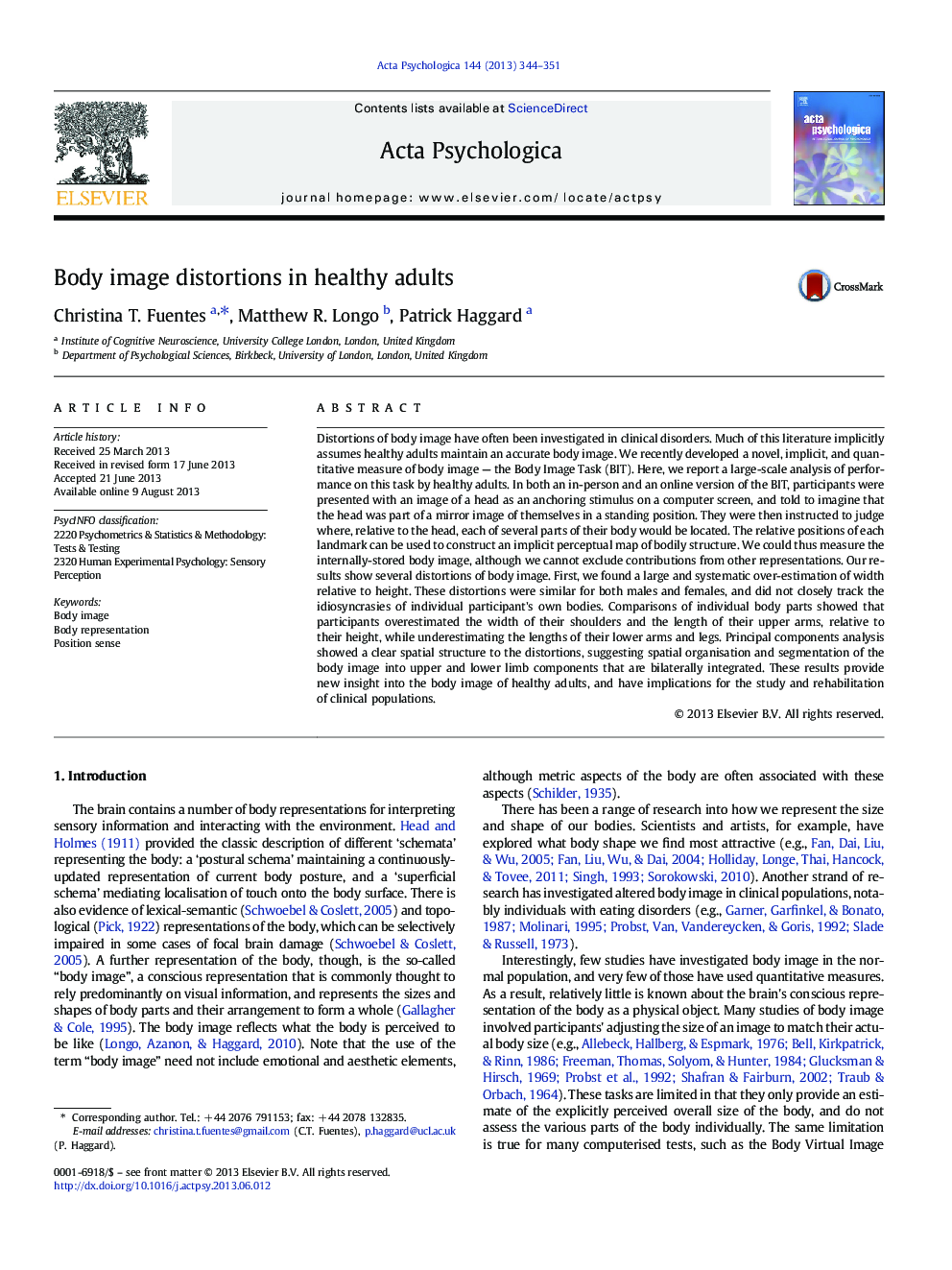| Article ID | Journal | Published Year | Pages | File Type |
|---|---|---|---|---|
| 10453781 | Acta Psychologica | 2013 | 8 Pages |
Abstract
Distortions of body image have often been investigated in clinical disorders. Much of this literature implicitly assumes healthy adults maintain an accurate body image. We recently developed a novel, implicit, and quantitative measure of body image - the Body Image Task (BIT). Here, we report a large-scale analysis of performance on this task by healthy adults. In both an in-person and an online version of the BIT, participants were presented with an image of a head as an anchoring stimulus on a computer screen, and told to imagine that the head was part of a mirror image of themselves in a standing position. They were then instructed to judge where, relative to the head, each of several parts of their body would be located. The relative positions of each landmark can be used to construct an implicit perceptual map of bodily structure. We could thus measure the internally-stored body image, although we cannot exclude contributions from other representations. Our results show several distortions of body image. First, we found a large and systematic over-estimation of width relative to height. These distortions were similar for both males and females, and did not closely track the idiosyncrasies of individual participant's own bodies. Comparisons of individual body parts showed that participants overestimated the width of their shoulders and the length of their upper arms, relative to their height, while underestimating the lengths of their lower arms and legs. Principal components analysis showed a clear spatial structure to the distortions, suggesting spatial organisation and segmentation of the body image into upper and lower limb components that are bilaterally integrated. These results provide new insight into the body image of healthy adults, and have implications for the study and rehabilitation of clinical populations.
Related Topics
Life Sciences
Neuroscience
Cognitive Neuroscience
Authors
Christina T. Fuentes, Matthew R. Longo, Patrick Haggard,
